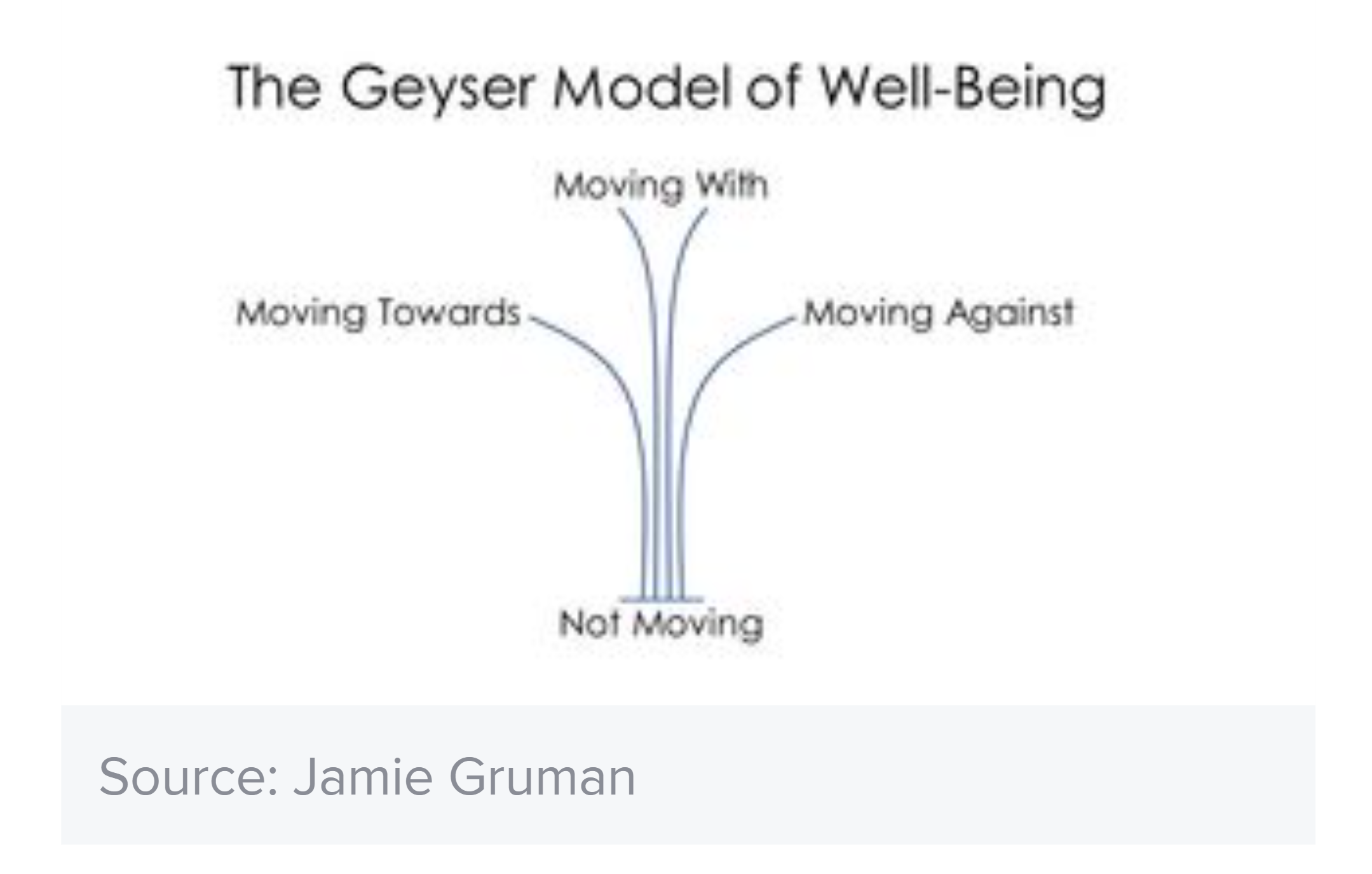There are many different models and theories to try and define wellbeing or to create positive insight and action towards achieving greater levels of wellbeing. All created by various people with various education and professional experience. Here is one of these such models by Jamie Gurham and published in PsychologyToday. I particularly like the focus on moving towards something or away from something. Read on…….
What are the main dimensions of mental well-being? I recently wrote a book chapter about workplace well-being and wanted to provide readers with an organizing framework to help them structure the way they think about the various forms of well-being that social scientists consider. It took quite a while because I had to flesh out my own thoughts about the topic, but I eventually came up with a model that I called The Movement Model of Workplace Well-Being, which can be used to understand well-being in the workplace but also well-being in general. When I subsequently tried to draw the model as a picture, I landed on an illustration that looks like a geyser with water splashing out of the ground, so let’s colloquially call it The Geyser Model of Well-Being (see image below).
The Geyser Model of Well-Being suggests that well-being can be thought of as having four categories, each of which contains different, specific forms of well-being. The first category, Moving Towards, includes forms of well-being that foster promotion-oriented thoughts and behaviors, and active engagement with life. Forms of well-being such as hope, positive emotions, and optimism fit within this category because they get people moving towards goals, relationships, thought patterns, and activities that represent well-being by virtue of their power to motivate people to participate vigorously in their lives, persist in the face of obstacles, and manifest thoughts that stimulate productive action. The forms of well-being in this category are consistent with the broaden-and-build theory which suggests that discrete positive emotions broaden people’s thought-action repertoires and promote the development of personal resources.

The Moving Against category involves forms of well-being that serve to distance oneself from the status quo. This can involve mentally distancing oneself, such as when we stream videos or listen to music in order to distract ourselves from the stressors of the day. It can also involve behaviorally distancing oneself. For example, an alcoholic who decides to pour their last bottle of vodka down the drain to symbolically and behaviorally distance themselves from drinking is likely to feel great pride at having taken this step. The pride, which is a form of well-being, comes from having distanced themselves from an unwholesome pattern of behavior and taken a step to redirect their life. Note how in the Moving Towards category well-being often precedes action, whereas in the Moving Against category well-being often follows action.
The Moving With category includes forms of well-being that involve an immersive concordance with a situation or oneself. One difference between Moving With and Moving Towards involves the degree of harmony an experience elicits. Whereas forms of well-being in the Moving Towards category can generate feelings of movement towards important goals, those within the Moving With category generate feelings of having arrived. Well-being forms such as flow, engagement, and awe fit within this category, as do certain notions of eudaimonic well-being. For example Alan Waterman’s notion of eudaimonic well-being involves engaging in activities that make one feel “a special fit or meshing”, “more complete or fulfilled, and that one is doing “what one is meant to do”.
The final category, Not Moving, comprises forms of well-being that reflect satiation and an absence of mental agitation. Forms in this category include peace of mind, equanimity, and calm. Mindfulness is a practice that can promote the forms of well-being in this category.
The Geyser Model of Well-being represents my current musings about how to structure the way we think about the various forms of mental well-being. The model points out that mental well-being has a number of dimensions. In this sense, it highlights that mental well-being is like physical well-being. We couldn’t assess someone’s physical well-being by considering a single indicator of health such as their blood pressure or cholesterol level. Instead, assessing physical well-being requires considering a number of health indicators simultaneously. Similarly, understanding mental well-being involves considering a number of psychological health indicators. And in the same way that a physical exam can highlight specific health issues that warrant our attention in order to enhance our physical well-being, The Geyser Model can help us diagnose specific areas in which some effort might be productively applied in order to enhance our own mental well-being. I hope you find it valuable.

